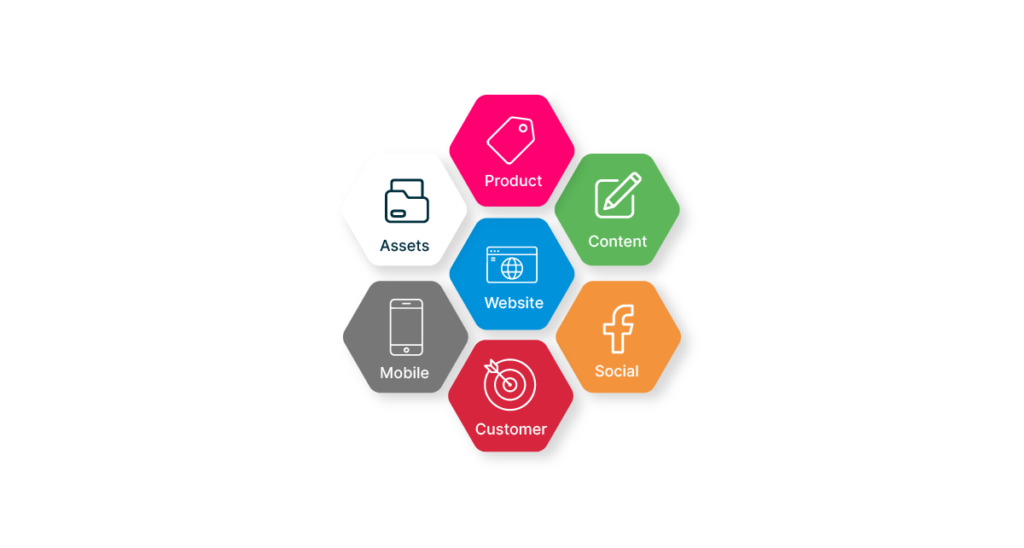
Updated on by Hayley Brown
The rise of Composable Commerce has ushered in a new era of agility and customisation in eCommerce architecture. Businesses can now build their ideal business flow by assembling best-fit modules from different systems. Just like creating your own LEGO figure with the bricks you choose.
Composable Commerce enables greater flexibility, faster innovation, and a tailored customer experience. However, with that flexibility comes a new level of complexity. That’s where iPaaS (Integration Platform as a Service) enters the conversation.
An iPaaS empowers Composable commerce, how do we know? Our customer Monica Vinader is the perfect successful example of how they have implemented Cyclr. They utilised the embedded iPaaS to connect their systems to create a seamless customer experience.
Monica Vinader Success Story
Read the success story of the popular jewellery brand Monica Vinader and discover how they utilise Cyclr.
What is a commerce/eCommerce ecosystem composed of?
Firstly, a commerce/eCommerce ecosystems are traditionally made up of a combination of different systems or modularity. Typically they include CRMs, ERPs, logistics, support systems, a store front and OMS (order management system). This is composable commerce, using the best of breed technologies from a variety of different vendors rather that relying on one vendor to provide standard functionality designed for the many.
These systems perhaps don’t address a commerce specific requirements and where composable commerce is introduced. The modular digital commerce approach encourages organisations pick and integrate independent services. Often these are delivered as microservices or headless components rather than relying on a single monolithic platform. These components can be swapped in or out as needed. As a result, they make businesses more adaptable to changing market demands or customer preferences.
Complexity at Scale
The benefits of Composable Commerce are clear, but implementing and maintaining this architecture requires seamless integration across dozens, and sometimes hundreds of APIs, data flows, and applications. Without a strong integration strategy, businesses can quickly find themselves mired in inconsistent data, brittle connections, and escalating operational costs.
What an iPaaS can do is integrate all those modular systems so they work cohesively together. One example of how this is beneficial to a brand is how it can create a seamless customer journey from ordering, to dispatching and delivery. Thus integrating every touchpoint for seamless customer experience.
Pairing iPaaS with Composable Commerce
Let’s explore a few core areas where iPaaS complements and strengthens Composable Commerce implementations:
1. Orchestrating the Commerce Stack
In a composable setup, you might use a headless CMS for content, a third-party search engine, a separate payment provider, and a custom-built promotions engine. iPaaS allows these services to communicate reliably and efficiently, handling everything from real-time data exchange to error recovery.
For example, if a customer updates their shipping address during checkout, that change must reflect in the order management system (OMS), customer profile, and fulfillment provider. iPaaS platforms can orchestrate these updates automatically.
2. Enabling Rapid Experimentation and Iteration
Composable Commerce thrives on agility—being able to test and deploy new services quickly. iPaaS accelerates this by reducing the integration overhead. Instead of writing custom code for every new vendor or service, teams can use prebuilt connectors or reusable templates to stand up integrations in a fraction of the time.
This is especially valuable in an environment where marketing, product, and IT teams all need the autonomy to iterate without bottlenecking each other.
3. Data Harmonisation Across Systems
With multiple systems collecting customer, inventory, order, and behaviour data, ensuring consistency and accuracy is essential. iPaaS can help normalise and synchronise data across platforms, whether it’s real-time inventory updates between ERP and storefronts or syncing customer segments between a CDP and personalisation engine.
It also makes compliance and data governance easier to enforce, with centralised control and visibility into data flows.
4. Future-Proofing Through Abstraction
One of the key goals of Composable Commerce is to avoid vendor lock-in. iPaaS adds a layer of abstraction that makes swapping services easier. Instead of tightly coupling systems together, you create integrations through the iPaaS layer, which can be adjusted or replaced independently of the services it connects.
This means if you outgrow your current search provider or switch payment processors, you can do so with minimal disruption to the rest of your architecture.
Real-World Example
Let’s take a look at a real world example and consider a retailer who uses the following:
- Kentico Kontent as a headless CMS
- Algolia for search
- Stripe for payments
- BigCommerce as the commerce engine
- Klaviyo for marketing automation
An iPaaS platform like Cyclr could serve as the connective tissue, synchronising product updates across CMS and search, triggering marketing emails based on purchase events, and ensuring inventory levels are consistent across sales channels.
iPaaS Isn’t Just a Backend Tool
Historically, integration was seen as a backend concern—something only architects and devs worried about. In the composable age, integration is a strategic enabler. With iPaaS, business users can define workflows, analysts can track data movement, and developers can focus on building value rather than writing boilerplate code.
Conclusion
Composable Commerce is powerful, but its success depends on the strength of the glue that holds its parts together. iPaaS provides that glue. It reduces friction, increases speed-to-market, and gives businesses the agility to evolve their tech stack over time—without having to rebuild from scratch.
For companies looking to embrace Composable Commerce, investing in a mature iPaaS strategy isn’t just beneficial—it’s essential.
Get in touch with the Cyclr team and talk to us about your integration needs.



